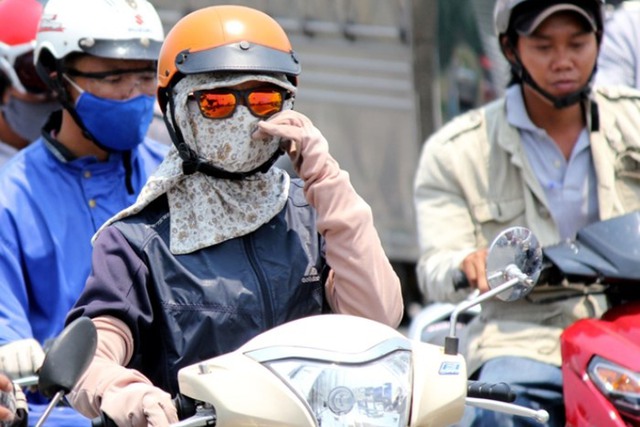Emission Inspection Deadline for Motorcycles Postponed
On June 3rd, the Department of Environment under the Ministry of Agriculture and Environment announced the latest draft on emission inspections for motorcycles, proposing to postpone the implementation deadline in Hanoi and Ho Chi Minh City to July 1, 2027. Previously, the old draft suggested the deadline as January 1, 2027.
Similarly, for other urban areas like Hai Phong, Can Tho, Da Nang, and Hue, the deadline has been pushed back from January 1, 2028, to July 1, 2028. As for the remaining provinces, the emission inspections will start from July 1, 2030, but they can choose to implement it earlier if they have the necessary conditions.
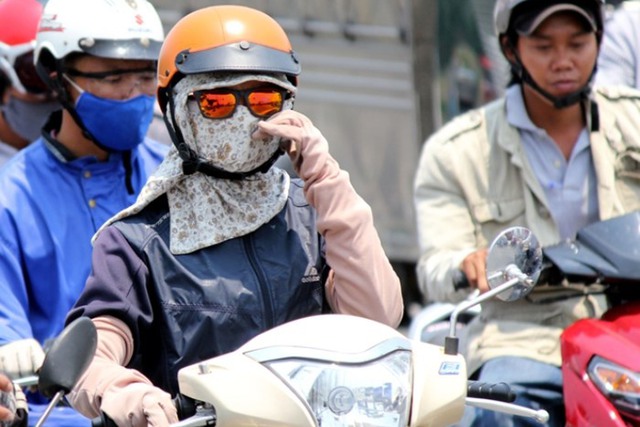
Vietnam has approximately 70 million motorcycles on the road. Illustration photo source: Frontier.
Significant Pressure on Inspection Infrastructure
Despite the postponement, experts believe that the pressure on the inspection infrastructure remains immense. Hanoi alone has 5.6 million motorcycles, and Ho Chi Minh City has about 8.6 million after the administrative merger; the nationwide figure stands at approximately 70 million. With such a vast number of vehicles, simultaneously implementing the emission inspection system is a highly challenging task.
According to VnExpress, Mr. Tran Hoang Phong, an expert from the Vietnam Register, stated that the emission inspection system for motorcycles is not yet established. Meanwhile, to accurately measure emissions at both idle and high-load conditions, each vehicle may require 20-30 minutes. Even if only measured at idle speed, the inspection time would still take around 7 minutes per vehicle.
On average, Hanoi would need around 400 inspection centers, and Ho Chi Minh City would require approximately 600. In contrast, both cities currently have only about 70 automobile inspection centers, most of which lack the necessary equipment and personnel for motorcycle inspections.
Mr. Phong emphasized that without proper investment and planning, simultaneous implementation in these two major cities could lead to a serious overload. “The biggest concern is a system breakdown. We have never conducted emission inspections for motorcycles before, so we lack both experience and adequate infrastructure,” he said.
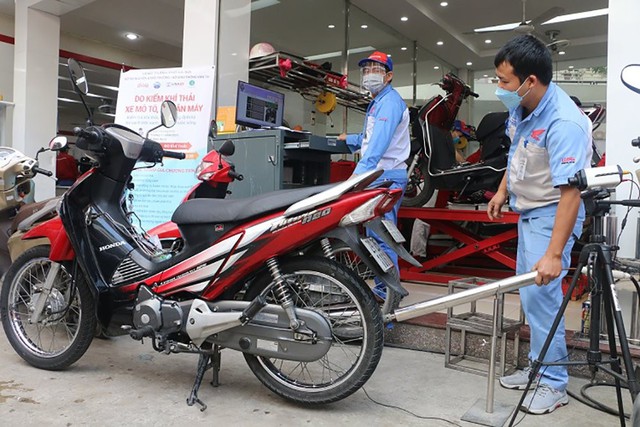
The pressure on inspection infrastructure is immense. Illustration photo source: Tuoi Tre Tho Do.
Mr. Nguyen Dong Phong, Director of the Road Vehicle Emission Testing Center, opined that without specific incentives such as tax breaks or reduced investment costs for machinery, it would be challenging to attract private investment to expand the inspection system. He commented: “The supportive clauses in the draft are still more like slogans and lack practicality to promote socialization.”
Regarding motorcycle owners, the new draft states that, within 18 months from the start of the implementation, authorities will not immediately fine vehicles that do not meet the emission standards. This period aims to raise awareness and guide people to voluntarily get their vehicles inspected.
However, according to Lao Dong newspaper, Mr. Le Hoai Nam, Deputy Director of the Department of Environment, believes that most people tend to procrastinate. If there are no fines, the willingness to get the inspection done voluntarily will be very low. Experience from automobile inspections shows that people often wait until the last minute, causing localized overload.
With over 70 million motorcycles on the road, Mr. Nam pointed out that this policy would affect almost every family, as motorcycles are still the primary means of transportation for most people. Therefore, careful calculations are necessary when implementing these measures to avoid significant economic and social disruptions.
What Do the Emission Standards Entail?
According to the draft, motorcycles will be categorized into four groups, each with its emission standard.
Specifically, for motorcycles (often referred to as “motorcycles” in Vietnam): those produced before 2008 will follow Level 1; those produced from 2008 to 2016 will follow Level 2; those produced from 2017 to June 30, 2026, will follow Level 3; and those produced after July 1, 2026, will follow Level 4. As for mopeds, those produced before 2016 will follow Level 1; those produced from 2017 to June 30, 2027, will follow Level 2; and those produced from July 1, 2027, onwards will follow Level 4.
These Levels can be considered “green” standards, with higher levels indicating greater environmental friendliness. Here are the specific emission limits for each level:
| Emission Level | CO (% by volume) | HC (ppm) – 4-stroke engine | HC (ppm) – 2-stroke engine | Applicable Vehicle Type |
| Level 1 | 4.5 | 1500 | 10000 | Motorcycles produced before 2008; mopeds produced before 2016 |
| Level 2 | 4.5 | 1200 | 7800 | Motorcycles produced from 2008 to 2016; mopeds produced from 2017 to June 30, 2027 |
| Level 3 | 3.5 | 1100 | 7000 | Motorcycles produced from 2017 to June 30, 2026 |
| Level 4 | 2 | 1000 | 7000 | Motorcycles produced from July 1, 2026, onwards; mopeds produced from July 1, 2027, onwards |
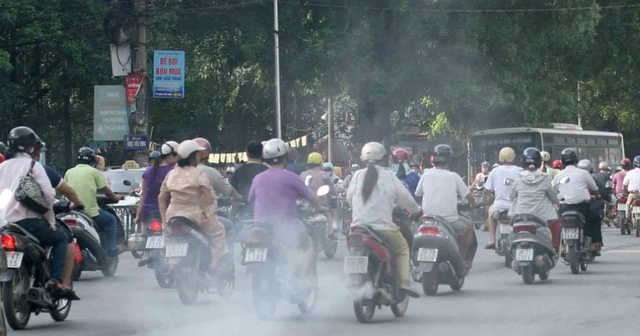
Emission inspection regulations will significantly improve air quality in urban areas. Illustration photo source: VnEconomy.
Level 1 applies to older vehicles, specifically motorcycles produced before 2008 and mopeds produced before 2016. This group of vehicles has older engine technology and tends to emit more toxic gases.
According to this standard, the amount of Carbon Monoxide (CO) must not exceed 4.5% of the total exhaust volume. For Hydrocarbon (HC), a harmful gas, 4-stroke engines are allowed a maximum of 1,500 parts per million (ppm), while 2-stroke engines are permitted a higher limit of 10,000 ppm.
Level 2 targets vehicles manufactured between 2008 and 2016 (for motorcycles) and from 2017 to the end of June 2027 (for mopeds). This group includes vehicles that have been in use for 7 to 15 years. While their technology is somewhat improved compared to older vehicles, their emissions are still relatively high compared to modern standards.
At this level, the CO limit remains unchanged at 4.5%, but HC emissions are tightened: 4-stroke engines are limited to 1,200 ppm, and 2-stroke engines to 7,800 ppm.
Level 3 applies to motorcycles produced from 2017 to the end of June 2026. This group represents relatively new vehicles and makes up a significant portion of the current urban fleet.
At this level, the emission limits are significantly stricter: CO is capped at 3.5%, and HC is reduced to 1,100 ppm for 4-stroke engines. For 2-stroke engines, which are less common, the HC limit is set at 7,000 ppm. This standard serves as an intermediate step towards higher emission levels in the future.
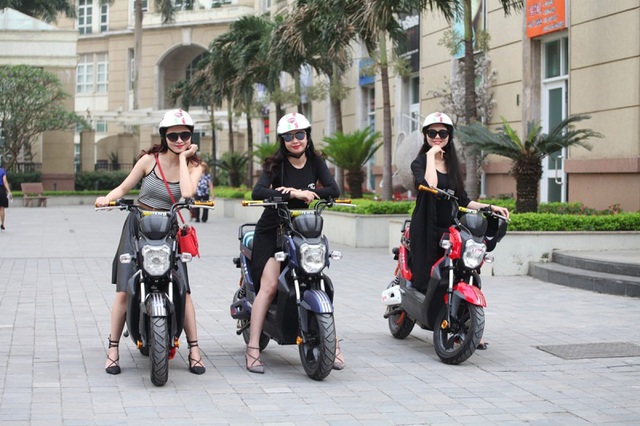
Electric motorcycles and bicycles are gradually replacing internal combustion engine vehicles, contributing to cleaner air in urban areas. Photo: Pho Xe Dien
Level 4 represents the highest emission standard in the draft and will be mandatory for all new vehicles sold in the market from July 1, 2026, for motorcycles, and July 1, 2027, for mopeds.
According to this standard, vehicles must ensure that CO does not exceed 2%, almost half of the limit of the lower levels. HC emissions are also tightly restricted: 4-stroke engines are limited to 1,000 ppm, and 2-stroke engines to 7,000 ppm. This level reflects a strong commitment to reducing air pollution and moving towards international standards such as Euro 3 and Euro 4.
Prior to this draft, there were already emission standards for motorcycles in Vietnam, based on the EURO standards. Specifically, EURO 2 was applied from 2007, and from January 1, 2017, EURO 3 was implemented for newly produced vehicles.
It is estimated that there are over 2 million motorcycles produced before 2009 in Hanoi and more than 3 million in Ho Chi Minh City. These vehicles are at the highest risk of emitting excessive pollution. When the new emission standards come into effect, this group of vehicles will need to meet Level 1 to be allowed on the roads.
Digital Assets: ‘In the Absence of Regulation, the Realm of Digital Assets Remains a Grey Area’
The spokesperson for the State Securities Commission of Vietnam stated that, as of now, the country lacks specific regulations for digital and crypto-asset markets. While ownership statistics are derived from diverse methodologies and may not reflect absolute accuracy, the Vietnamese market holds significant potential in this arena.

